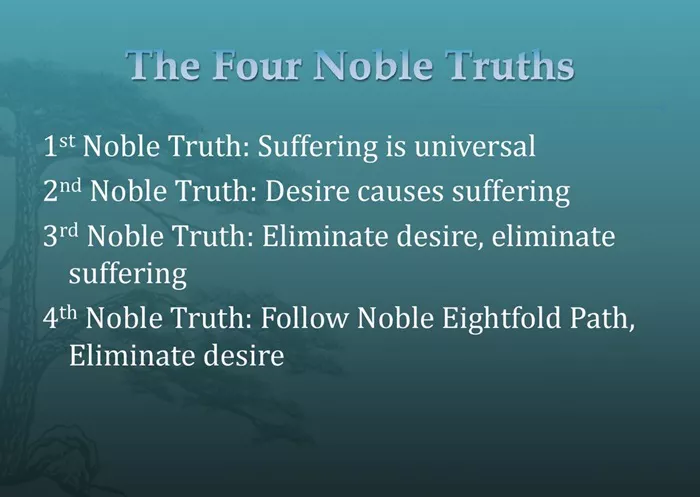The Four Noble Truths meaning is central to Buddhism. These truths explain the nature of suffering and the path to end it. They were taught by Siddhartha Gautama, known as the Buddha, over 2,500 years ago. Understanding their origins helps us grasp why they are so important in the four noble truths religion and practice today.
Who Was the Buddha?
Early Life of Siddhartha Gautama
Siddhartha Gautama was born in a small kingdom in what is now Nepal. He lived a life of luxury but left it all behind to seek answers about suffering and life’s meaning. After years of study and meditation, he reached enlightenment and became the Buddha, the “Awakened One.”
The Buddha’s Teaching Mission
After his awakening, the Buddha traveled to share his insight with others. He did not see himself as a god, but as a guide who showed the way to freedom from suffering. The core of his teaching is the Four Noble Truths.
The Historical Context of the Four Noble Truths
Religious Ideas Before the Buddha
Before the Buddha’s time, people in India practiced many rituals and believed in gods controlling their fate. There were many questions about suffering, life, and death. The Buddha offered a new way, based on direct experience and understanding, not just rituals.
How the Four Noble Truths Were Introduced
The Four Noble Truths were first taught in the Deer Park near Varanasi, India. This was the Buddha’s first sermon after his enlightenment. His first followers were five monks who had also been searching for truth. This moment marks the beginning of Buddhism as a distinct spiritual path.
What Are the Four Noble Truths?
The First Noble Truth: Dukkha (Suffering)
The Buddha taught that life is full of dukkha, often translated as suffering or unsatisfactoriness. This does not only mean pain or sadness but also the general feeling that things are never completely fulfilling or lasting.
The Second Noble Truth: Samudaya (Origin of Suffering)
The cause of suffering is craving or desire. People want pleasure, possessions, and even existence itself. This constant wanting traps us in suffering.
The Third Noble Truth: Nirodha (Cessation of Suffering)
The Buddha said that it is possible to stop suffering by ending craving. This state is called Nirvana, a peaceful and free state beyond all desires.
The Fourth Noble Truth: Magga (The Path)
The way to end suffering is through the Eightfold Path. This path includes right understanding, right speech, right action, and other ethical and mental practices.
Tracing the Historical Roots of the Four Noble Truths
Oral Tradition and Early Teachings
In the Buddha’s time, teachings were passed down orally. The Four Noble Truths were memorized and recited by monks. This oral tradition helped preserve these ideas for generations before they were written down.
Early Buddhist Texts and the Four Noble Truths
The earliest Buddhist scriptures, called the Pali Canon, contain the Four Noble Truths. These texts were written centuries after the Buddha’s death but are believed to closely reflect his original teachings.
How the Four Noble Truths Spread
As Buddhism grew, the Four Noble Truths became the foundation of many schools of thought. Different Buddhist traditions interpret them slightly differently, but their core remains the same.
The Four Noble Truths as a Symbol
The Four Noble Truths Symbol Explained
The four noble truths symbol often appears in Buddhist art and teachings. It reminds practitioners of the truth about suffering and the path to liberation. Commonly, the symbol is depicted with four elements representing each truth.
Why the Symbol Is Important
This symbol helps keep the Four Noble Truths at the heart of Buddhist practice. It is a simple way to remember the Buddha’s teachings and encourages people to reflect on their meaning.
The Lasting Impact of the Four Noble Truths
Influence on Buddhist Practice
The Four Noble Truths guide meditation, ethics, and wisdom in Buddhism. They help practitioners understand their mind and life deeply. Many Buddhist rituals and teachings are based on these truths.
Relevance in Modern Life
Even today, the Four Noble Truths offer practical advice for dealing with stress and difficulties. They encourage mindfulness and compassion, which are useful beyond religion.
Conclusion
The origins of the Four Noble Truths lie in the Buddha’s personal quest for understanding suffering. From their introduction in ancient India to their spread worldwide, these truths remain the core of Buddhist teaching. Their simple but profound message continues to inspire millions seeking peace and freedom from suffering.

